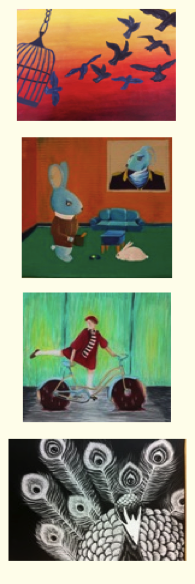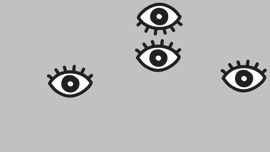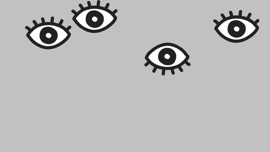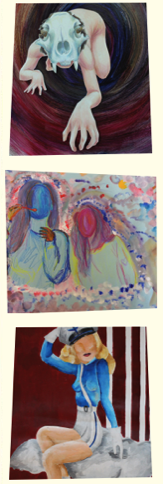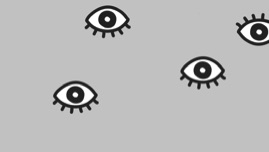
ELEMENTS OF ART/DESIGN
Line
is a mark with greater length than width. Lines can be horizontal, vertical or diagonal, straight or curved, thick or thin.
Shape
is a closed line. Shapes can be geometric, like squares and circles; or organic, like free formed shapes or natural shapes. Shapes are flat and can express length and width.
Forms
are three-dimensional shapes, expressing length, width, and depth. Balls, cylinders, boxes and triangles are forms.
Space
is the area between and around objects. The space around objects is often called negative space; negative space has shape. Space can also refer to the feeling of depth. Real space is three-dimensional: in visual art when we can create the feeling or illusion of depth we call it space.
Color
is light reflected off objects. Color has three main characteristics: hue or its name (red, green, blue, etc.), value (how light or dark it is), and intensity (how bright or dull it is).
Value
is the element of art that deals with darkness or lightness. Value depends on how much light a surface reflects. Value is also one of the three properties of color.
Texture
is the surface quality that can be seen and felt. Textures can be rough or smooth, soft or hard. Textures do not always feel the way they look; for example, a drawing of a porcupine may look prickly, but if you touch the drawing, the paper is still smooth.
PRINCIPLES OF DESIGN
BALANCE
is the distribution of the visual weight of objects, colors, texture, and space. If the design was a scale these elements should be balanced to make a design feel stable.
In symmetrical balance, the elements used on one side of the design are similar to those on the other side.
In asymmetrical balance, the sides are different but still look balanced.
In radial balance, the elements are arranged around a central point and may be similar.
EMPHASIS
is the part of the design that catches the viewer's attention. Usually the artist will make one area stand out by contrasting it with other areas. The area will be different in size, color, texture, shape, etc.
PROPORTION
is concerned with the size relationships of one part to the whole and one part to another.
RHYTHM/MOVEMENT
is created when one or more elements of design are used repeatedly to create a feeling of organized movement. Variety is essential to keep rhythm exciting and active, and moving the viewer around the artwork. Rhythm creates a mood like music or dancing.
UNITY
is the feeling of harmony between all parts of the artwork creating a sense of oneness or completeness. Unity can be established by the following methods:
Proximity. Placing objects close together.
Continuation. Using edges or lines that travel from one part of a composition to another
Repetition. Repeating the elements of design (line, shape, color and texture) creates unity within the artwork.

